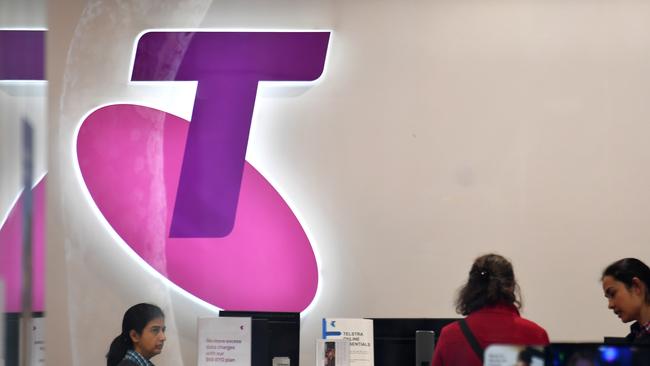Telstra has walked away from using carbon offsets in favour of direct action
The federal government’s Climate Active program will lose its largest single player, with Telstra walking away from labelling mobile phone plans as carbon neutral and using carbon offsets.

The federal government’s Climate Active carbon neutral labelling program will lose its largest single participant, with Telstra to walk away from claims of carbon neutrality and carbon offsetting in favour of direct action to reduce emissions.
The Climate Active program was lambasted in a Senate inquiry in April, with claims it was being used to “greenwash” large companies by allowing them to claim carbon neutrality, despite the Australian Competition and Consumer Commission refusing to endorse the program’s claims.
The Climate Active label is being used by about 700 companies, products, buildings and events, with participants paying an annual licence fee for the right to call themselves carbon-neutral with the government’s backing.
The ACCC said in April that the trademark certification process for the scheme had been suspended after several attempts at clarifying its rules.
Telstra, which until now has claimed to be “Australia’s largest Climate Active-certified organisation’’, and which claimed carbon neutrality in 2020 via the purchase of carbon credits to offset its emissions, told The Australian on Thursday that its move away from being a Climate Active participant was not related to any concerns around the government program or the credibility of carbon credits generally.

Instead, Telstra’s head of environment Tom Penny said the company’s stakeholders had made it clear in consultation with them that they preferred a direct approach to emissions reduction.
As a result, Telstra will now remove claims that its mobile phone plans are “carbon neutral” or “carbon offset”, and the company itself will not claim to be carbon neutral.
Scope one & two target
Telstra will also on Friday announce it will increase its scope one and two carbon emission reduction targets from 50 per cent to 70 per cent by 2030, with its scope three target remaining at 50 per cent.
The company said it had to date achieved a 30 per cent reduction in scope one and two emissions since the 2019 financial year and had offset its emissions each year since 2020.
This emissions offsetting will stop from July 1, and the offsetting of emissions from mobile phone and mobile broadband plans will cease from August 31.
“As one of Australia’s largest electricity users, we believe we should prioritise activity to reduce our direct emissions from our network, which will in turn help contribute to Australia’s climate goals,’’ the company said.
“We are aware of the increased public and industry interest in how corporates are using carbon credits in recent years, and that consumers are increasingly expecting organisations to take more direct and transparent climate action.
“That is why we believe redirecting our investments from purchasing carbon credits to taking more direct climate action here in Australia, will help consumers better understand how we are having more direct impact on climate change.’’
The direct action will involve a range of strategies such as investing in more efficient technology, decommissioning infrastructure which is not energy efficient, and longer-term, looking to examine the use of green hydrogen cells and how artificial intelligence can make the organisation more efficient.
Mr Penny said Telstra’s change in direction was not due to any doubts about the credibility of carbon offsets as a device.
“I think ours is more around the transparency of the action we’re doing, as opposed to the credibility of the credits themselves, and really wanting to be clear that we’re doing everything we can to reduce the impact of our own business,’’ he said.
Mr Penny said Telstra was still supportive of the Climate Active program, and that it “still would be a great pathway for some businesses who are still choosing to use credits’’.
“The change for us is more about the change in our climate ambition and approach and therefore the follow on effect is unfortunately, we don’t meet the Climate Active requirements as they stand,’’ Mr Penny said.
Climate Active questions
Last year, the Albanese government announced a review of the Climate Active certification, originally introduced in 2017 and rebranded in 2019, with proposed updates including removing the term “carbon neutral” and implementing stricter reporting requirements.
Greens Senator Sarah Hanson-Young, who chaired the inquiry in April, said corporations and businesses across the country including Energy Australia, Origin Energy, NAB, and ANZ were “claiming to their customers that they have green products, that they are carbon-neutral. And they’re relying on this government stamp of approval.
“And the government’s stamp of approval hasn’t even been properly certified.
“Australian customers are fed up with greenwashing lies.”
Department of Climate Change, Energy, the Environment and Water (DCCEEW) deputy secretary Jo Evans told the inquiry, “there was nothing “unusual or improper” in continuing to use the logo.
“We take very seriously the use of our Climate Active logo and we make sure that it is used in circumstances that comply with it,” Ms Evans said.
The department said members of the program had achieved “better emissions reductions than others” and that it was not aware of any company that had misused the trademark.





To join the conversation, please log in. Don't have an account? Register
Join the conversation, you are commenting as Logout